Currently Recognized Breeds
There are currently twenty six breeds of Bos taurus beef cattle recognized under the Animal Pedigree Act (APA) administered by Agriculture and Agri-Food Canada. Bos taurus are known to produce high-quality, tender beef on a consistent basis.
The base of Canada’s national herd is built upon traditional breeds of British origin, primarily Angus, Hereford, Shorthorn, and Galloway. Through the 1950’s, 60’s and 70’s breeds of Continental European origin were introduced to improve growth rates, efficiency, dressing percentage and cutability. These include Charolais, Simmental, Limousin, Gelbvieh, Salers, and Maine Anjou. Visit our Membership area to view all breeds represented by CBBC. Canada has also developed its own breeds using other breeds in combination, including Hays Converter and Speckle Park.
There are approximately 10,000 breeders of registered beef cattle of all breeds in Canada. Canadian purebred producers supply seed stock cattle, genetics and related technologies to commercial breeders within Canada and throughout the world.
- Angus
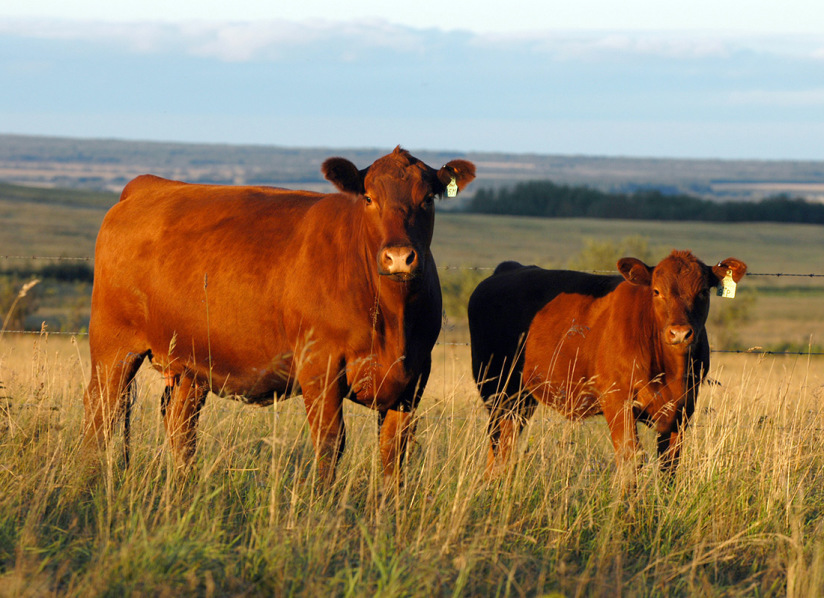
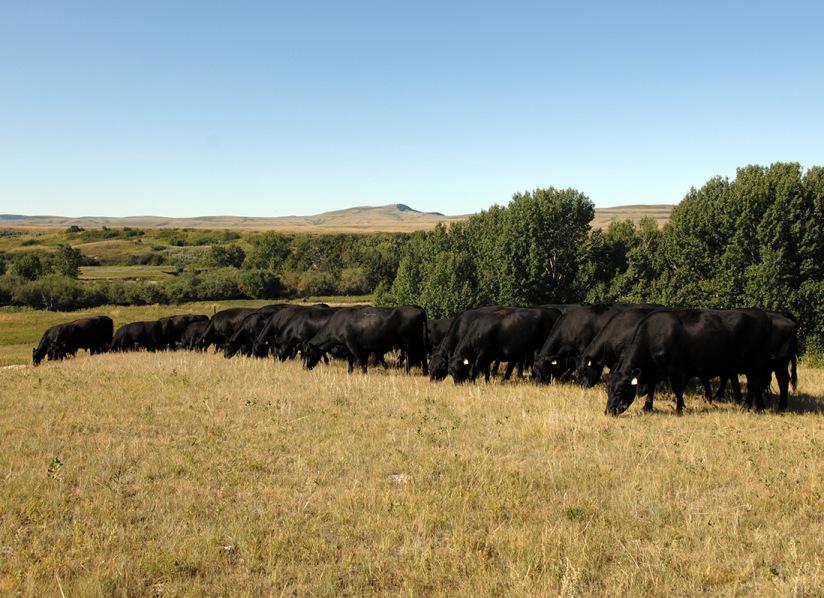
Aberdeen Angus cattle were first imported to Canada in 1860. The breed was strengthened with further imports from Scotland and the cattle have been registered by the Canadian Angus Association since 1905. Since 1960, animals have been exported back to Scotland and around the world. All Angus animals registered in Canada are 100% purebred and all walking sires are DNA tested and sire verified to ensure the accuracy of our records.
Red and black Angus are both registered in one herd book, but the registration paper easily indicates the colour of each animal. The breed has experienced a significant growth in demand and size and is now the largest and fastest growing breed in Canada.
Angus animals offer numerous economic advantages in addition to their solid red or black colour. They are naturally polled, easy keeping and the females are natural mothers. Over 98.5% of all registered Angus calves are born unassisted, weaning weights usually exceed one half of the cow’s weight. It is not unusual for a cow to remain active and healthy for fourteen or more years.
Angus cattle are extremely fertile but the increased demand for Angus genetics in Canada has been because of the quality of the carcass. Cattlemen using Angus with superior marbling ability open the door for improved beef tenderness and increased consumer acceptance of beef.
Canadian Angus breeders have worked cooperatively with the American Angus Association to improve our Performance Program and provide more accurate genetic evaluations on both Red and Black Angus. All breeders are encouraged to weigh and measure cattle and submit performance data that will provide customers with accurate information to select suitable genetics for their breeding program.
Angus is Canada’s leading beef breed because Angus and Angus-cross cattle make sound economic sense, in the breeding pasture, the feedlot, at the packing plant, and on the table.
- Blonde D’Aquitaine
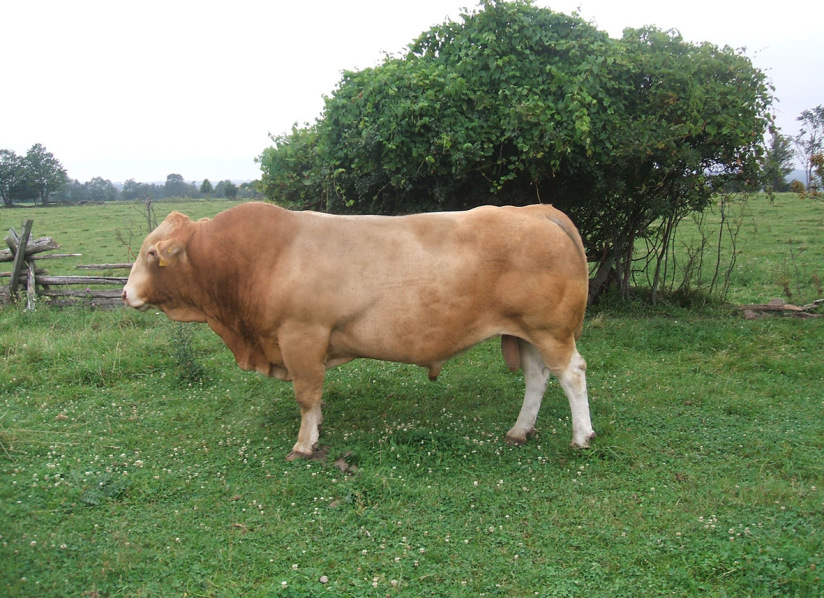
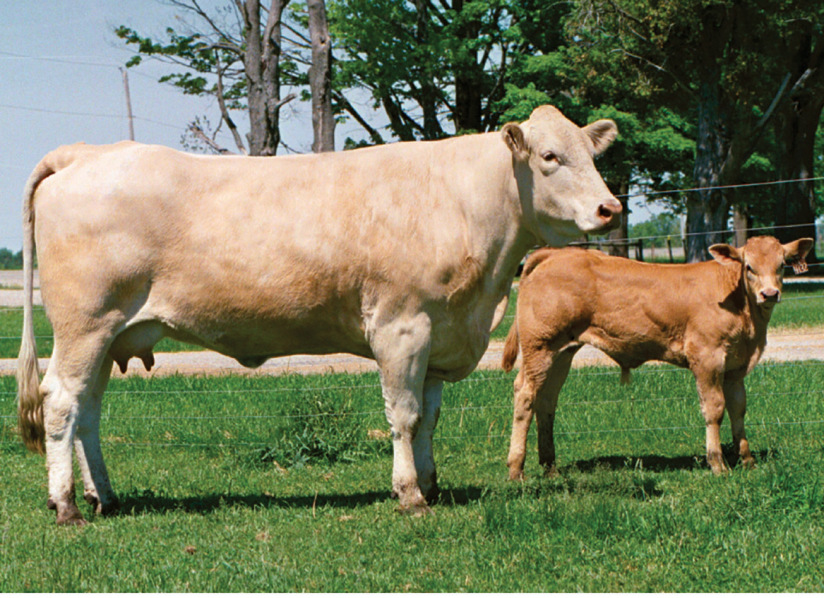
Blonde d’Aquitaine arrived in Canada, from France, in the early 70’s at the end of the importation era of continental cattle from Europe. At the time of the first imports, the Blonde breed in France was one of the smaller breeds in number. Blondes are now the third largest beef breed in France.
Blondes, a large, high performance breed, excelling in lean meat yield, have been bred with calving ease in mind. Their fine-boned bodies have been bred to be longer and leaner at birth to facilitate easier calving. While well know in countries around the world for their well-muscled, high-yielding carcasses, the Blonde calf does not start to show the heavier muscled hind quarter, until it is four to six weeks of age.
Voluntary breeder participation in Performance tracking provides EPDs for birth, weaning and yearling weights, milk, a number of carcass traits (using ultrasound technology) and scrotal measurement.
Fullblood polled Blonde genetics have contributed to the Herd book in Canada and are marketed worldwide via semen, embryos and by live animals into the United States.
All registered fullblood Blondes in Canada are parentage verified by DNA.
Crossbreeding with Blondes adds muscle, length and thickness in the calves, produces more beef, less fat, less bone and supplies a high-yielding carcass. Crossbred Blonde carcasses have a high Commercial Index Superiority, high meat density, heavier meat to the carcass, leaner meat (3.7% less fat at the 11th rib): heavier muscling (5.9% more muscle on the 11th rib): less bone (2.2% less on the 11th rib): and excellent lean to fat ratio. Blondes cross extremely well with dairy breeds, increasing muscling immensely.
- Braunvieh
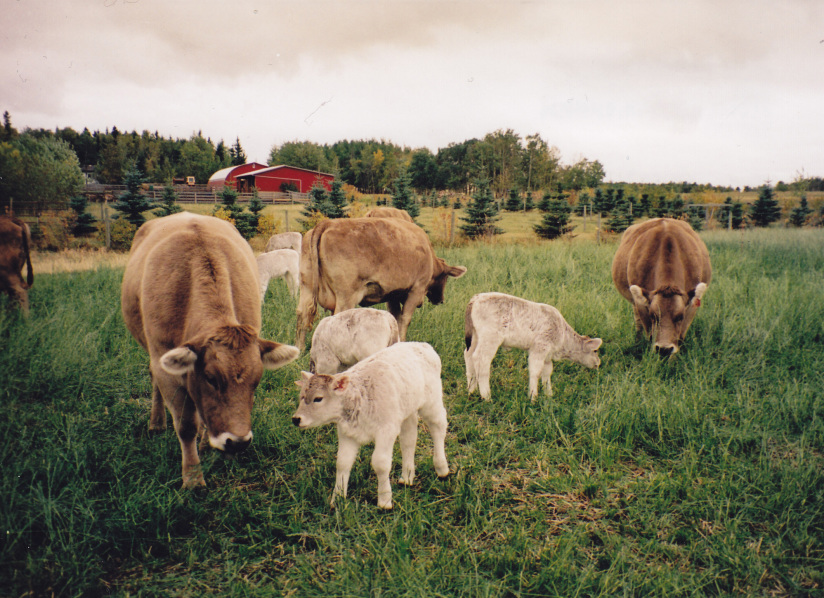
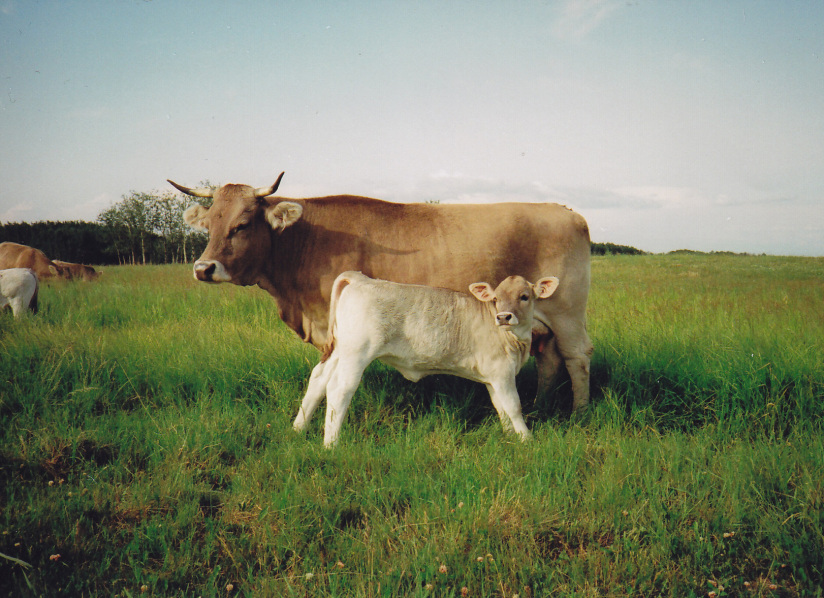
The German word “Braunvieh” means “Brown Cattle”. Braunvieh enjoy the status as being one of the oldest pure breeds, which originated in the alpine regions of Switzerland. Their colour is of various shades of brown with males generally being darker and the calves are born almost white, darkening with age. They typically have dark pigmentation around the eyes, black noses with light-coloured bands around the muzzles, and strong black hooves.
Braunvieh is a medium-sized, dual purpose breed, which excels in maternal traits and docility. They are very hardy, adapting to extreme cold or heat and are known for their longevity. About 40% of the cattle in Switzerland are Braunvieh and, due to their high performance and exceptional tolerance to various climates, they are raised in more than 60 countries, from the Arctic Circle to the tropics, at altitudes varying between sea level and 12,500 feet.
The history of Braunvieh can be revisited through documents preserved in monasteries, whose occupants took great pride in raising and improving these cattle. Among these historical files, notes indicate trading of brown cattle in the eighth century and provide records of performance dated as early as 1315. Standardized production records on milk and meat performance were
established in the 19th century.In 1869, the first export of brown cattle took place to the U.S., where they became the foundation in the development of the Brown Swiss dairy cow, by constantly selecting for high milk production.
In 1968, the first Braunvieh from Switzerland arrived in Canada and there have been several subsequent importations of live animals and semen and later of embryos and the result has been the development of Canadian Braunvieh that have been marketed and proven world-wide.
Braunvieh, having been bred pure for centuries, offer complete outcross genetics for other breeds and have repeatedly proven themselves in cross-breeding programs. Braunvieh add thickness, early maturity and good gains, which makes their offspring perform very well in feedlots. Consistent top placement with the most respected carcass/sire evaluation tests in the beef industry have brought much recognition to the breed and its ability to improve beef quality.
Most of the Braunvieh herds can be found in Alberta, with numbers increasing in other provinces. Highly profitable production, long productive lives, docile temperament, wide range of adaptability and rapid growth are all distinctive characteristics of this breed.
- Charolais
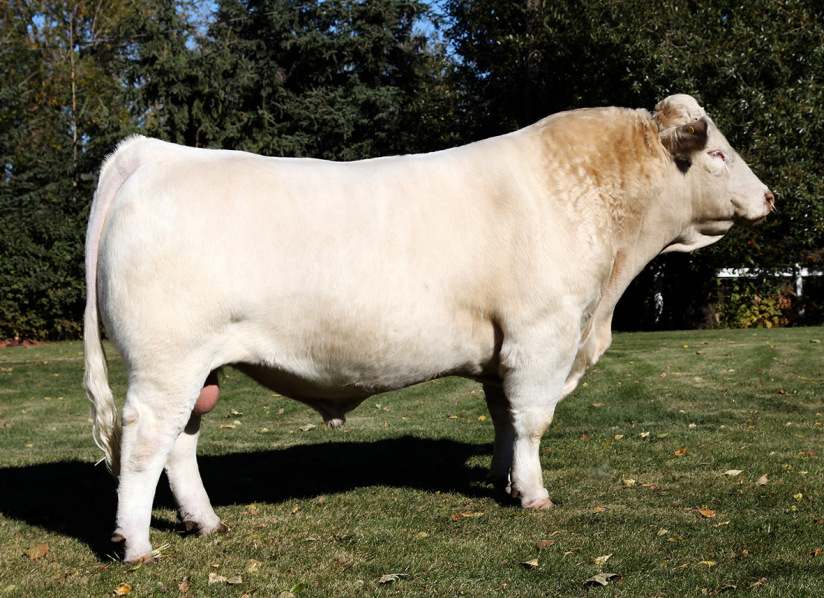
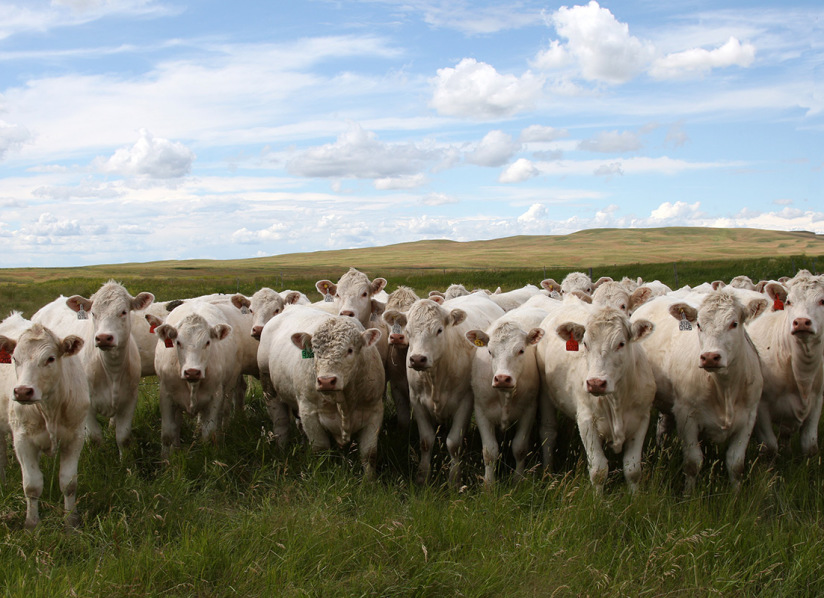
Charolais were first imported to Canada in 1956 from the United States. Later, cattle were imported directly from France. In 1959 the Canadian Charolais Association (CCA) was formed and in 1960 it was formally recognized as a Breed Association under the Animal Pedigree Act of Canada.
The CCA is a non-profit organization that derives funding from member subscriptions and the Whole Herd Enrolment (WHE) fees. The Canadian Charolais Association operates a number of performance testing initiatives on behalf of its members. However the backbone of the performance program is Whole Herd Enrolment in which breeding and calving information is tracked on each cow every year. This tracking ensures the highest possible level of accuracy in Charolais pedigrees and allows breeders to monitor reproductive traits. Research has shown that fertility is the most economically important trait in beef production and total herd reporting sets Charolais apart as an industry leader. All performance data from the past is utilized in producing a high accuracy, scientifically proven Canadian Expected Progeny Difference (EPD). EPD’s indicate genetic differences in cattle and may be used for comparison across herds.
Due to the diverse landscape and the extremes in both temperature and precipitation in Canada, Canadian Charolais are highly adaptable to not only the Canadian environment and production systems but to climates and production systems throughout the world. Charolais cows have performed well under a variety of environmental conditions and are selected as very structurally sound animals with exceptionally good feet and strong legs. This is important when cattle are managed in large herds and on vast areas of land where walking distances for feed and water is necessary.
It has been said that no other breed has impacted the North American beef industry so significantly as the introduction of Charolais. Canadian Charolais are highly compatible with the indigenous cow base and the cross is second to none. In Canada the Charolais crossbred calf receives a premium price at the auction market.
- Galloway
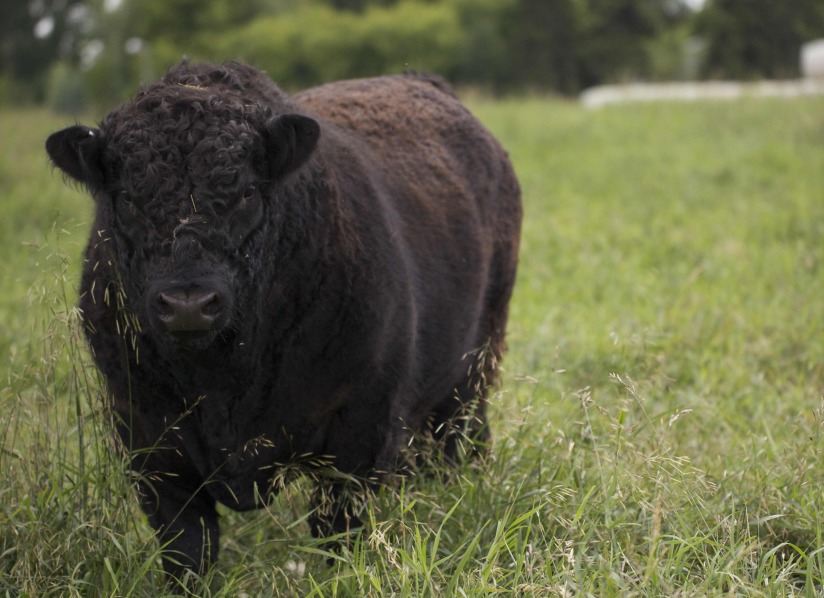
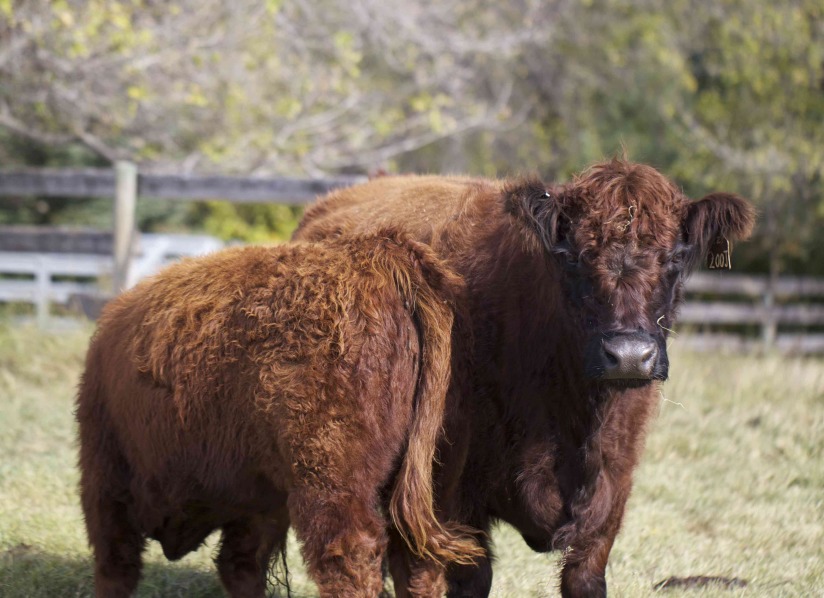
The Canadian Galloway Association represents three breeds: Galloways, Belted Galloways, and White Galloways. All three breeds come in black, dun, or red color. Galloways were imported into Canada in 1853, Belted Galloways were imported around 1950, and White Galloways were imported in 1966.
A double coat of hair in the winter helps to reduce feed intake and therefore lower costs and helps produce flavourful meat, lean yet-well marbled without excessive external fat. The breed is naturally polled and will eliminate horns from the next calf crop. Feeding tests at Olds College in Olds, Alberta over the last 21 years have shown that Galloway steers had excellent feed conversion rates and produced excellent carcasses.
For further information please contact the Canadian Galloway Association c/o Canadian Livestock Records Corporation.
- Gelbvieh
Pages
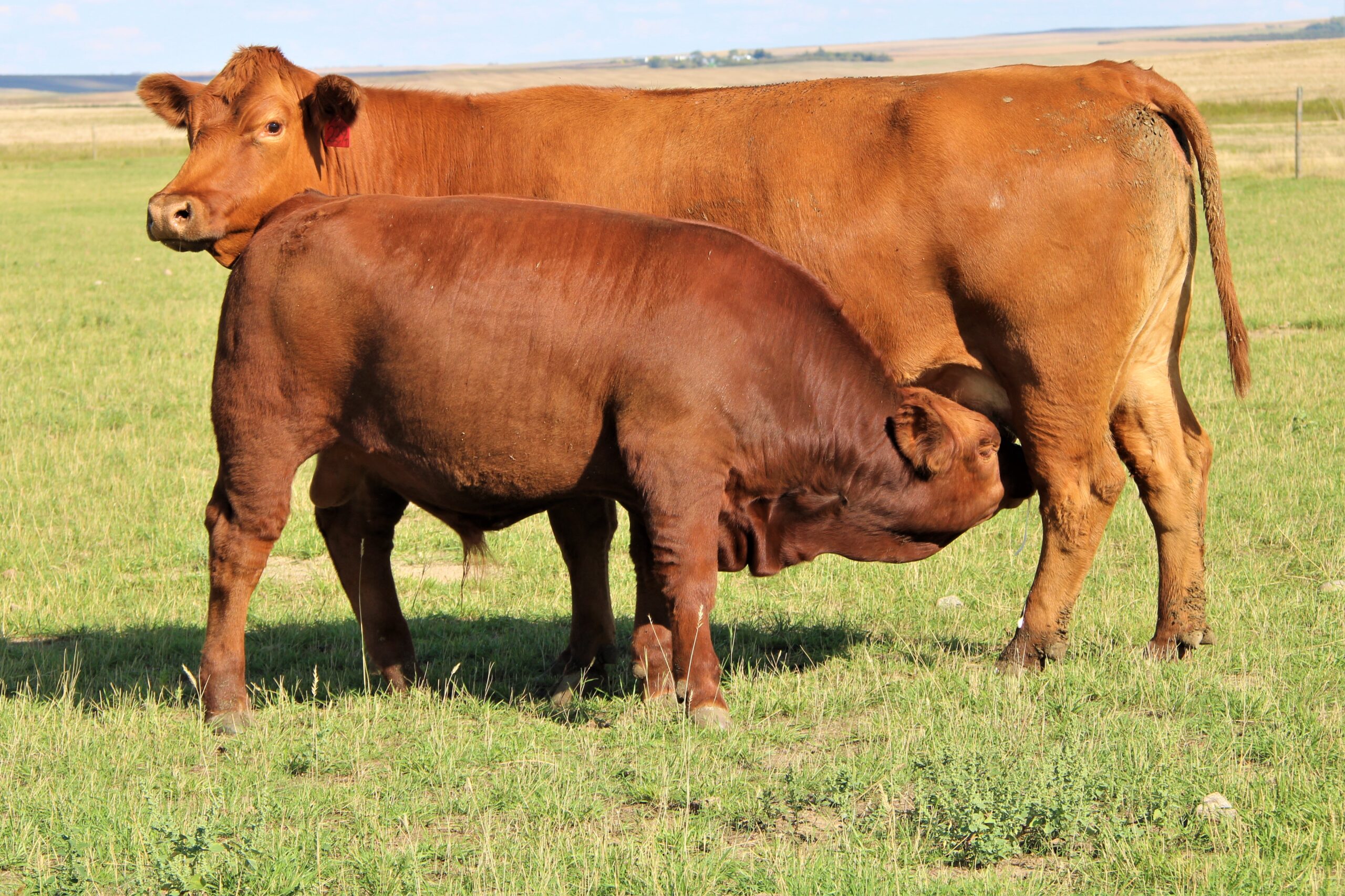
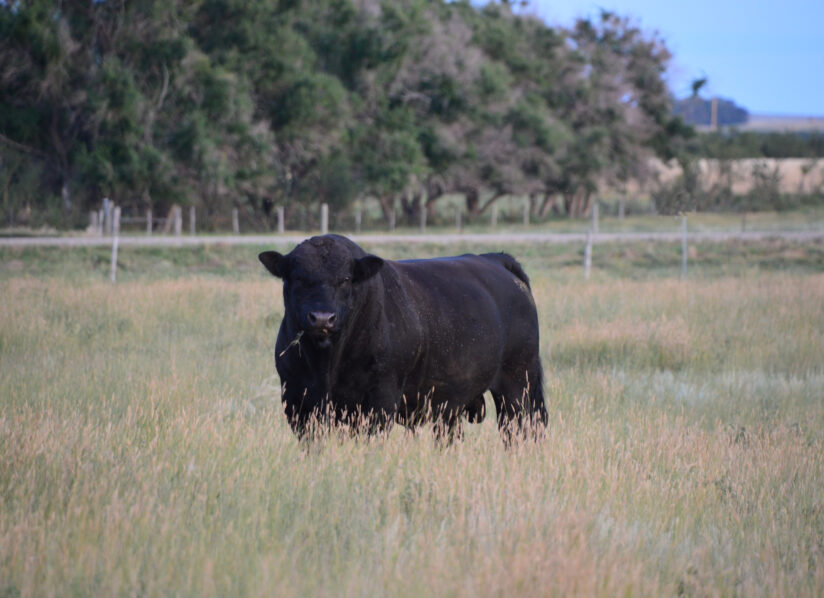
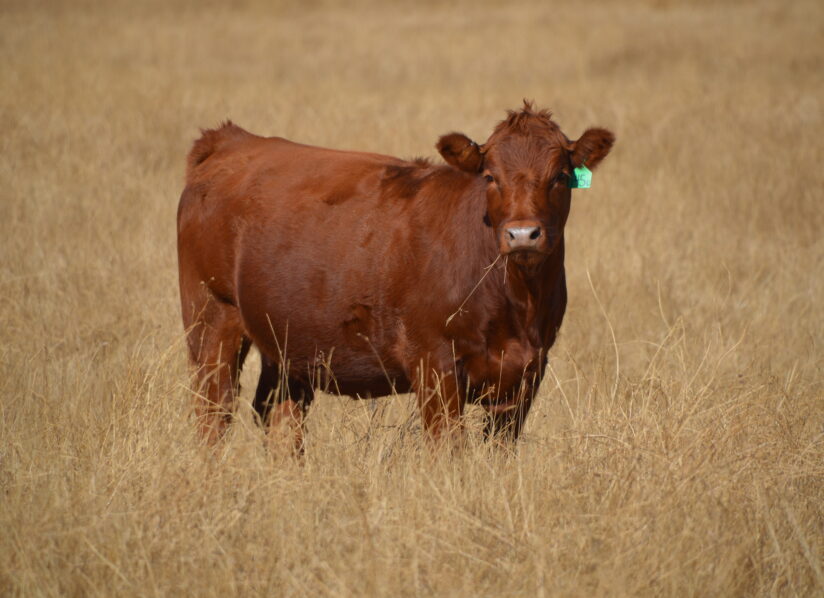
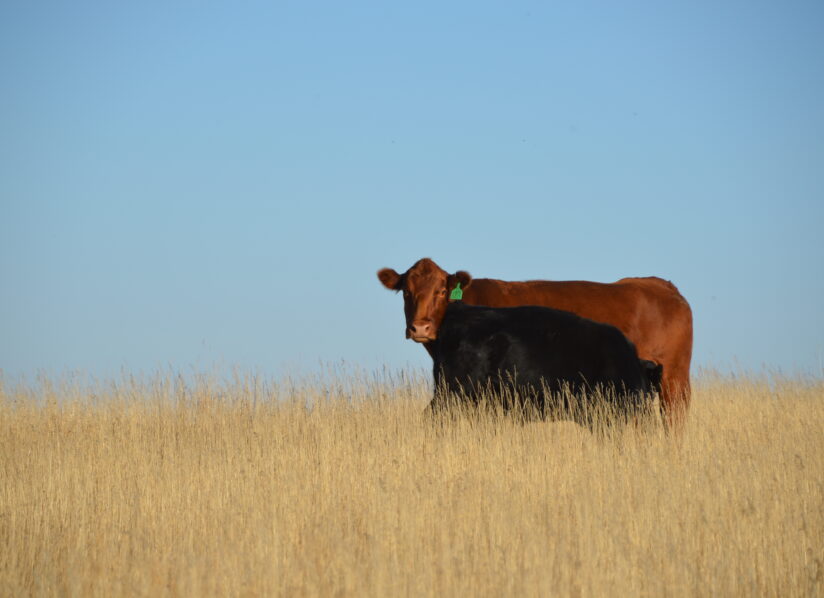
Gelbvieh cattle were developed in the Bavarian region of Germany in the early 19th century. Gelbvieh was first imported into Canada in 1972, instigating the incorporation of the Canadian Gelbvieh Association (CGA) under the Canadian Animal Pedigree Act. 2022 marked 50 years of Gelbvieh in Canada. In celebration a 50th Anniversary History book was published and copies can be purchased through the CGA office.
The CGA has maintained the strong performance heritage of the breed with a policy of mandatory performance records. In cooperation with the American Gelbvieh Association, this has produced a database of well over one million performance records that result in an annual Sire Summary, Cow recognition Program, and contribution to a multi-breed EPD evaluation for all registered Gelbvieh and Gelbvieh influenced animals. This provides a powerful source of documented information for cattlemen raising Gelbvieh on both the commercial and purebred level. Another great resource for information on the Gelbvieh breed and breeders is the Gelbvieh Guide, available online through the CGA website or you can contact the CGA office to get added to the mailing list.
Gelbvieh traits of fertility, calving ease, longevity, milking ability, moderate size and docile temperament have become more important than ever before, making Gelbvieh an optimal choice for crossbreeding programs. Vigorous at birth, Gelbvieh calves wean off heavy and gain rapidly. Documented progeny tests, impressive feed efficiency and lean/muscular carcasses round out the roster of breed’s characteristics that have made Gelbvieh popular with cow/calf operators, feeders, packers and consumers.
- Hereford

Herefords were first imported into Canada by William F. Stone of Guelph, Ontario from Herefordshire, England. He admired their strength, docility and feed efficiency. Herefords have prospered in Canada for over 150 years, due to these strengths and their hardiness in the coldest of winters and driest of summers.
Today, these major breed strengths of disposition and feed efficiency, along with its versatility in crossbreeding programs, continue to position Hereford as the breed of choice in commercial cowherds. It is currently the second most popular breed exported from Canada.
Herefords are leaders in docility. Research has proven that docile temperament increases cattle profitability through lowered production costs and better meat quality. Disposition is becoming increasingly important as a sought-after trait by producers purchasing either female or bull replacement for their cattle operations. Cattle with a good temperament are easier to handle, safer to be around at calving time, adjust better to new environments and tend to perform better in all phases of the production chain.
Herefords are widely used for cross breeding in North America, especially with Angus cattle. A recently completed research study conducted in conjunction with California State University indicates an overall net return for Hereford-sire crossbred calves to be approximately $30.00 (USD) per head in a vertically coordinated beef marketing system. US Meat Animal Research Center (MARC) research shows hybrid vigor to be greater in whiteface cross cattle, due to the genetic purity in the Hereford breed.
The Hereford breed is recognized as being more efficient. Hereford and Hereford influence cattle consistently require less feed than cattle of other breeds, per pound of gain and for body maintenance. Disposition and the thick hide and excellent hair coat of Hereford cattle are among the reasons less energy is required to stay warm in the winter, thereby reducing feeding costs. Again research has shown that Hereford cattle are about 6.0% more feed efficient than other breeds, which is a significant economic factor for profitability.
The Canadian Hereford Association was formed in 1890 and was incorporated in 1902 under the Government of Canada Animal Pedigree Act. The Animal Pedigree Act ensures the integrity of the registration and documentation of the ancestry of purebred Hereford cattle. The Canadian Hereford Association is also part of the Pan American Cattle Evaluation (PACE) program which includes genetic evaluations from the countries of Argentina, Uruguay and the USA. Semiannual genetic evaluation reports are produced by PACE members for their respective members. The Expected Progeny Differences (EPDs) are reported on 11 traits, which include calving ease, birth weight, weaning weight, yearling weight, carcass traits, scrotal circumference, cow weights and stay-ability. The Canadian Hereford Association also independently produces a genetic evaluation index for maternal productivity and feedlot merit, in order to track, retain and improve on these traits.
The Hereford breed is among those which represent the foundation of Canada’s beef industry, making it one of the most widely used cattle breeds. More Hereford genetics have been exported from Canada in the past 30 years than from any other breed. Live animals, semen and embryos have been exported to: the USA, Russia, Kazakshtan, Australia, New Zealand, the U.K., Ireland, all the Nordic countries, Germany, Japan, China, Hungary, Chile, Poland, Brazil, Argentina, Uruguay, and South America.
- Limousin
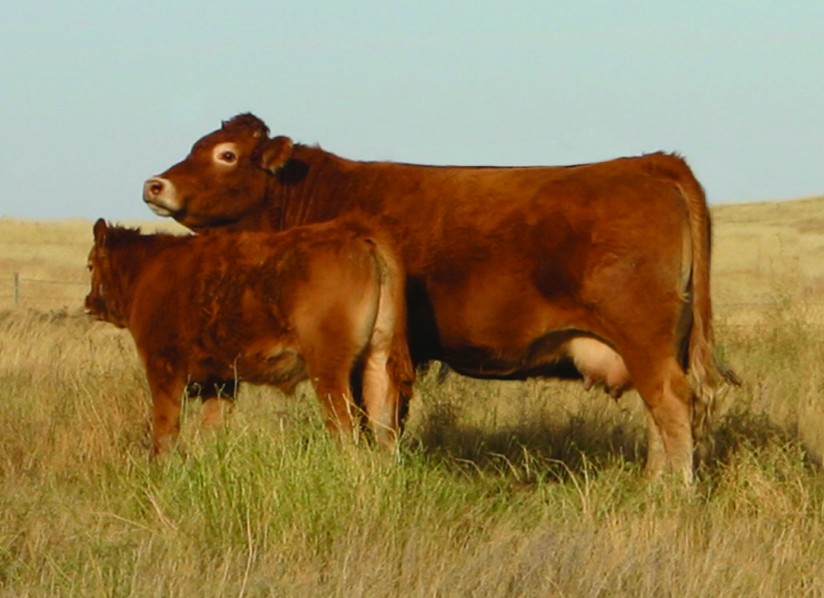
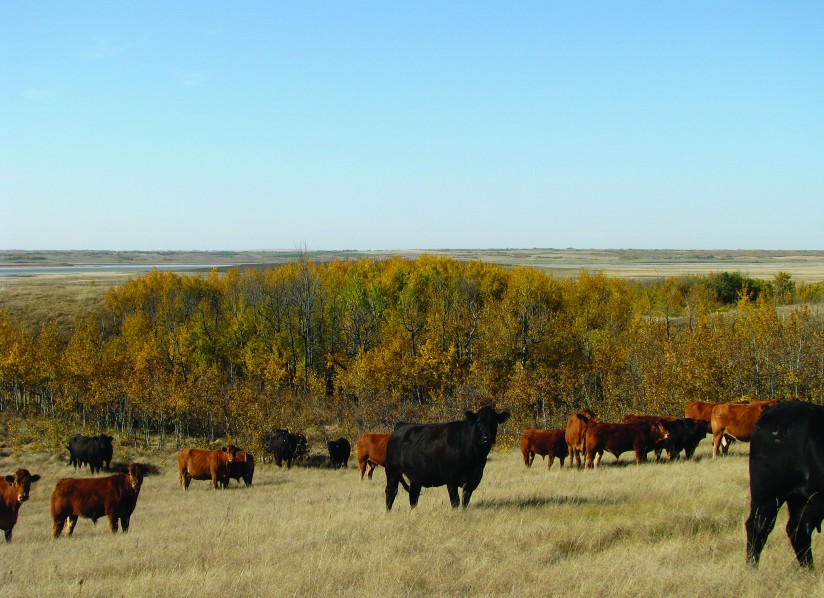
Get More Muscle For Less!
LIMOUSIN – the genetic leader for muscle, growth, efficiency.- Best adapted continental breed for the case-ready beef industry
- Proven as the top breed for feed conversion
- Superior muscle
- High weaning and yearling muscle growth with moderate birth weight
- Highest red meat yield of any major breed
- Uniform size and color
- Best Cross with British Based Females
- Carcass Champion, Canadian Western Agribition for 28 consecutive years
- Superior Canadian health status
- Exceptional pedigree integrity*
*The Canadian Limousin Association carries the only Full French Limousin Herd book in the world that guarantees every single registered Full Blood animal is parent verified by DNA genotyping or bloodtyping.
Imported to Canada in 1968 from France, Limousin is one of the five major breeds in Canada and in the United States. The Limousin breed has an important economic role in today’s beef industry. Known throughout the world as the carcass breed, Limousin cattle excel in feed efficiency and have proven to consume less than other animals of the same size and yet perform to equal or superior levels. The Limousin female is appreciated In commercial production for her easy maintenance, her fertility and milking ability while Limousin sired calves are sought after for their feed conversion and high quality carcass. This genetic achievement is the result of selection based on carcass and residual feed intake research and development throughout the North American Limousin population.
The Canadian Limousin Association (CLA) is a non-profit, member-owned organization. Our primary function is to maintain the pedigree herdbook of Limousin cattle in Canada. We are committed to the improvement of the Limousin breed by way of performance programs, research, education, advertising and promotion, and export.
- Lowline
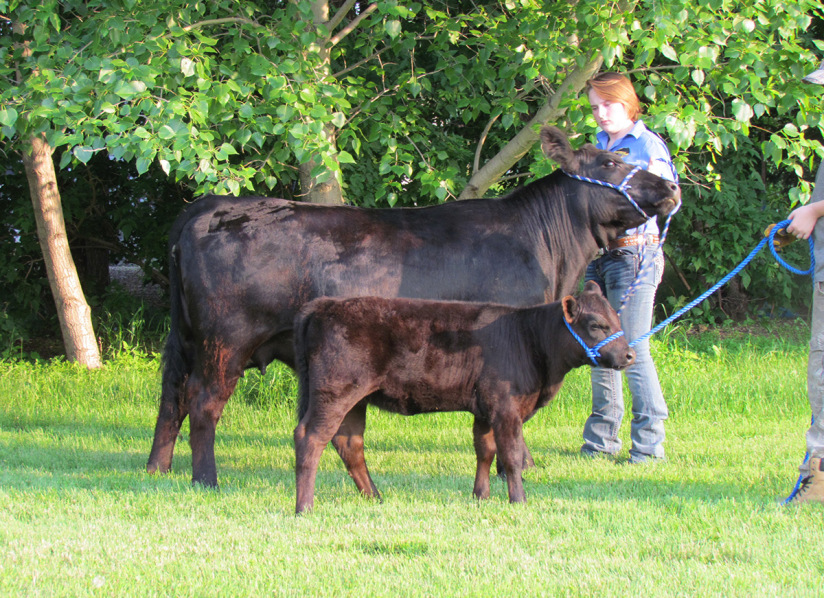
The first Lowline cattle in North America came to Canada in 1996. Interest in them has grown steadily since. The Canadian Lowline Cattle Association was established in 1997. Fullbloods and percentage cattle are now recognized in separate herd books. Lowline cattle were developed by the Trangie Agricultural Research Centre in NSW, Australia. In 1929, a choice Aberdeen Angus herd from Canada, supplemented by additional animals from the USA and Scotland, was purchased by the Australian government to form the foundation of a research herd. From 1929 to 1963 this Angus research herd was prominent in the Australian showing circuit and won many awards. The herd was closed to outside genetics in 1964, and between 1974 and 1992 research was performed to investigate the efficiency of converting feed to beef within groups of different sized animals. The Angus herd was divided into three groups; the “High Line”, the “Low Line” and a random “Control Line”. A detailed evaluation of weight gain, feed intake, reproductive performance, milk production, carcass yield and quality and structural soundness was carried out. Through 20 years of research, the smaller “Low Line” cattle were found to be extremely efficient converters of feed to beef while maintaining performance in the other characteristics studied. Interest in the smaller animals was great, and a new breed was created when the herd was dispersed to private breeders in 1992.
Lowline possess traits that will help them excel in the cattle industry. They are extremely hardy, naturally polled, black or red in color, and small framed. At all stages of their growth they are about 60% of the size of normal beef cattle. Lowline cattle mature early. They are easy calving and docile. At birth calves average 40 to 50 pounds. Calving losses are extremely low and even heifers have great ease in calving. The dams make excellent mothers and provide ample milk. Cows at maturity average about 100 cm at the hip while equivalent age bulls stand about 110 cm. Lowline are extremely efficient grass feeders and can even be finished on grass. They exhibit rapid early growth. Carcasses yield high, with reduced fat but greater marbling. Cuts are smaller which is attractive to the health conscious consumer.
An increasing number of commercial breeders are committing to downsizing their cattle. They want cattle that are moderate framed with excellent muscling ability and performance. Lowline bulls have proven to provide this consistently. Crossing heifers with Lowline sires produces aggressive calves that are born easy. Fewer calving difficulties mean more calves and a higher percentage of cows returning to calf. Half blood calves average 65 pounds but wean off heavy with high yielding carcasses and consistent marbling. Lowline bulls in a commercial herd provide easier handling, calving ease, increased stocking rates, increased feed efficiency and high yield quality carcass characteristics. The ease and profitability of beef production increases once the frame score of the herd is reduced.
- Maine Anjou
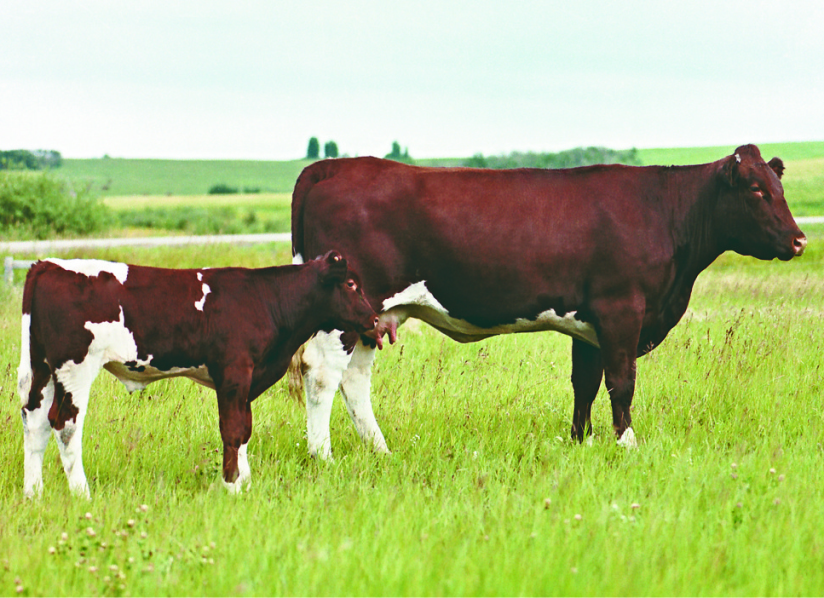
The Maine Anjou breed originated in France in the 19th century, taking their name from the Mayenne and Anjou river valleys in which they were developed. In France the breed has evolved as a dual-purpose breed, where the cows are selected for their milk production, and bull calves are fed for market. The traditional colouring is very dark red with white markings on the head, belly, rear legs and tail. White on other parts of the body is also common.
The first Maine Anjou arrived in Canada in 1969 and later through artificial insemination the breed entered the United States. In 1970, the Canadian Maine Anjou Association was formed. Over the past 35 years in Canada, selective breeding has: reduced the frame size of both fullbloods & purebreds, drastically reduced birthweights, tightened up the front end, thickened up the back end, developed a polled feature in both fullbloods & purebreds and developed multiple colours due to the recessive fullblood colour gene, resulting in the traditional red & white (fullblood) colouring, solid black, solid red and other colour patterns.
Advantages to breeding Maine Anjou are high rates of gain, feed efficiency, adaptability to climatic extremes, superior carcass quality, docility, and smooth muscling. Bulls are known for being: high gainers, with a quiet disposition, sound conformation and the ability to be horned, polled or scurred. Females are recognized for their: quiet disposition, strong milking ability, maternal instincts, extreme longevity (10 years or more), easy calving ability and high fertility.
Crossbreeding with Maines adds: stretch, growth rate, quiet disposition and more pounds at weaning to a herd. Maines can also be utilized to breed for or select against other specific traits. Crossed with white-faced cattle, the Maine influence produces dark pigmentation around the eyes. This reduces the occurrence of cancer eye and pink eye. The recessive red gene can be utilized to maintain your preferred colour pattern. Maines’ performance at tests and in shows has repeatedly shown that Maine Anjou genetics can be advantageous to any herd!
- Salers
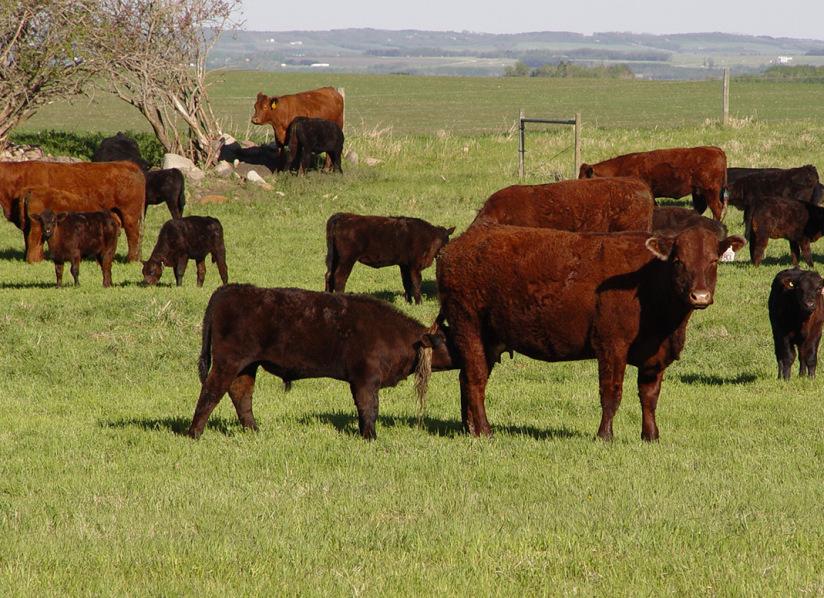
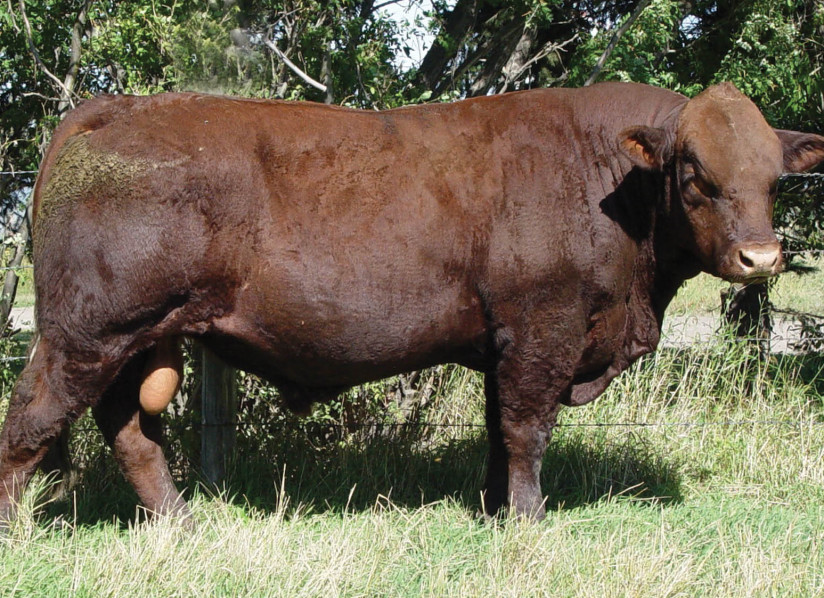
Salers are considered to be one of the oldest European breeds, whose roots can be traced to 16,500-year-old cave drawings found near the town of Salers in the South Central region of France, the Auvergne, in the heart of the volcanic area of the Massif Central. The rough terrain, poor soil and harsh climate combined with the area’s isolation has contributed to a genetically pure breed of cattle with bred-in range ability to thrive almost entirely on native grasses in the summer and roughage diet in winter.
The Salers breed in North America has evolved into an outstanding maternal beef breed with no lack of performance and carcass traits. The cattle are usually solid red or black and are naturally horned but polled bloodlines have been developed by selection and are now predominant in the national herd. Salers females possess a larger than average pelvic area, the largest in the industry, and calve easily to the service of larger terminal cross sires. They are excellent mothers with good milk production, are very fertile and re-breed quickly.
Salers bulls are efficient breeders and sire calves of moderate birth weight, with a strong will to live and good growth. USMARC studies have confirmed that Salers is the highest marbeling Continental breed, have a large ribeye area and a leaner carcass (less fat thickness) than British breeds. Salers cross steers perform well in feedlots and have exceptional carcass yield and quality.
The Salers breed is one of only three breeds evaluating data on docility and through the efforts of its breeders has improved this trait dramatically in recent years. The genetic trend for Salers has been very positive from a breed average of near zero in 1992 to the current breed average EPD of over +8.0.
Excellent feet and legs contribute to admirable longevity. All of these traits combined, have made Salers the choice of many commercial cattlemen striving to maximize production without increasing management or labour costs. Salers are a balanced breed, which is key to optimizing all aspects of beef production.
Salers were first imported into Canada in 1972 with the Salers Association of Canada being established in 1973. Canada continues to be an excellent source for Salers genetics worldwide.
- Shorthorn
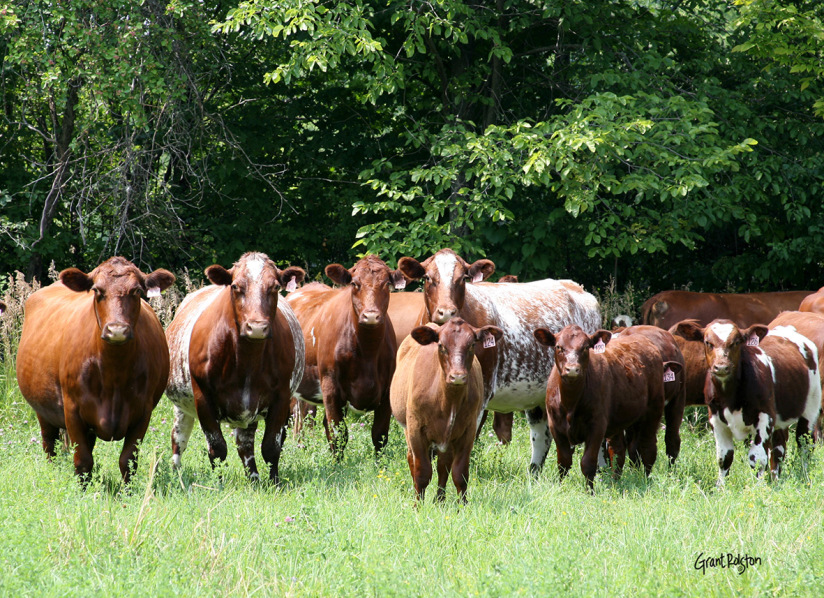
The Shorthorn breed had its founding about 225 years ago in Durham County in North East England. Shorthorn cattle are medium framed with mature females in the 1400 -1600 pound range and bulls ranging from 2200 – 2400 pounds in working condition. They are available both horned and polled with homogeneous polled genetics also available. The main colour variations are solid red, red with white markings, and roan and white, which gives commercial producers several different options to select from to suit their situations.
Shorthorn genetics have always provided a strong maternal trait. The Shorthorn female, purebred or crossbred, has long been sought after for its early maturity, fertility, ease of calving, milk production, longevity and docility. Carcass traits have been an area where the exotic or terminal breeds have excelled.With the more recent return and focus on a moderate carcass with consistent superior marbling, the carcass traits of the Shorthorn breed have become more popular. Feedlot tests reveal that Shorthorn influenced cattle reach the optimum carcass weight at an earlier age with a higher percentage of AA+ marbling. While exotic breeds will claim more muscling and larger rib eyes they cannot compete with the consistent, well marbled, high yielding Shorthorn carcasses.
Today’s Canadian Shorthorns continue to prove that they play a very important role in the future of the beef industry. While many breeds portray themselves as being balanced and versatile, none of them compare to the ability of Shorthorn genetics to adapt and improve in a variety of crossbreeding situations.
- Simmental
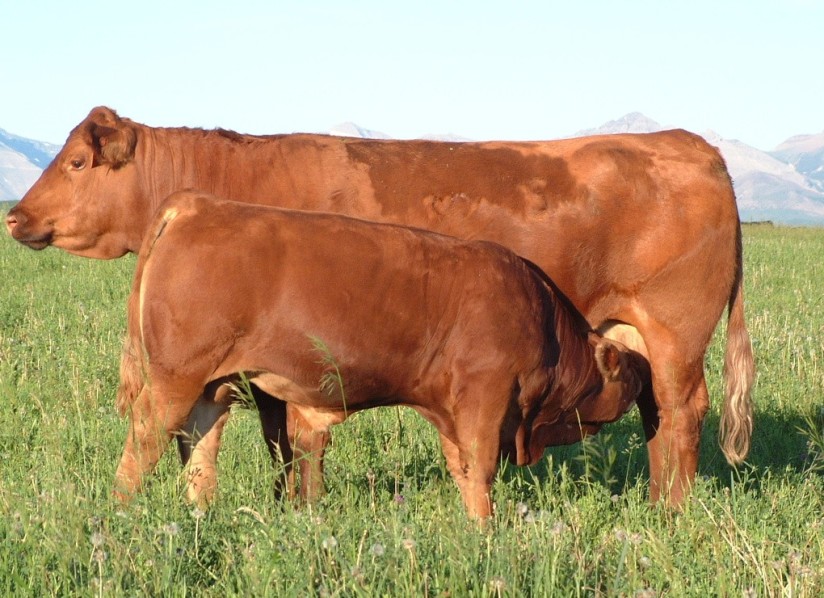
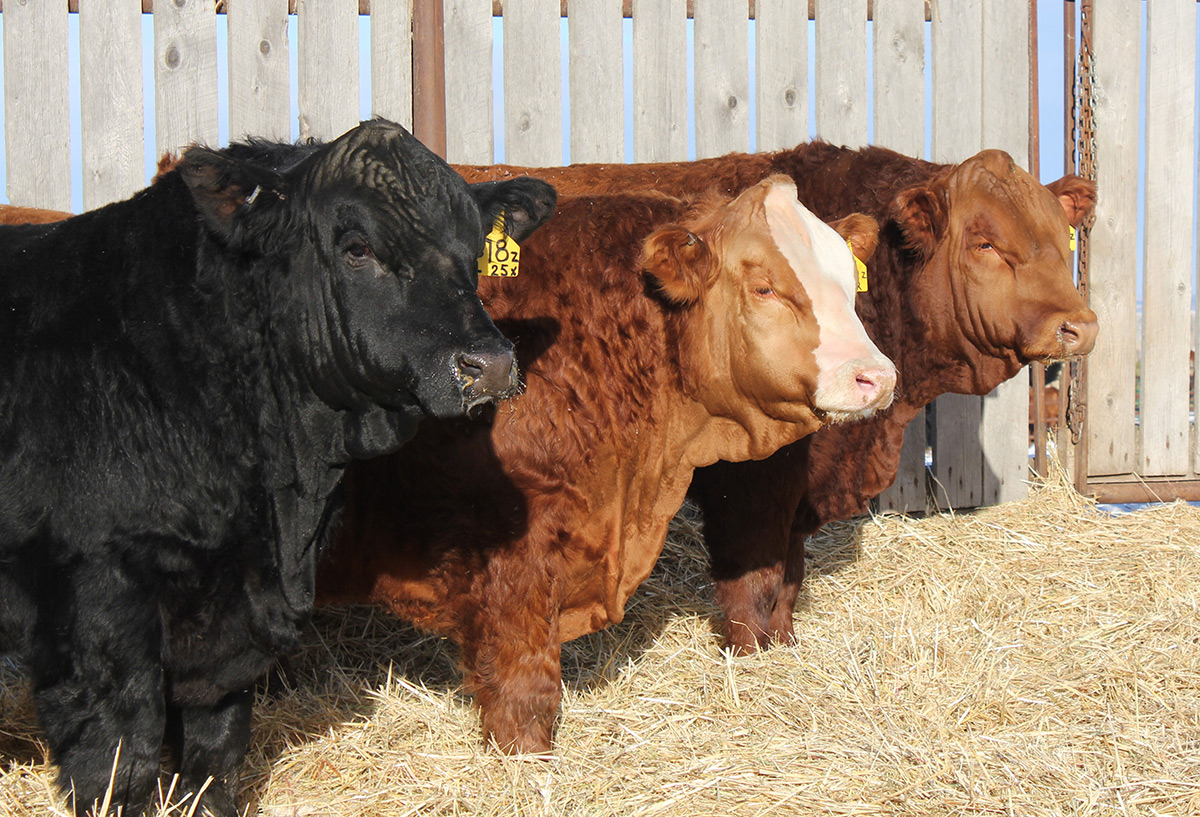
Since the first importations to Canada, Simmental has grown in popularity and has become one of the nation’s most influential breeds. Outstanding growth and performance, combined with unbeatable milk and mothering abilities has resulted in the superior Canadian Simmental beef animal of today.
The Simmental female is recognized globally as one of the best mother cows in the commercial cattle industry. Cattlemen have found them to be profitable, docile animals that possess superior carcass characteristics. These attributes have positioned Simmental as the breed of choice in cross-breeding programs with all other cattle breeds. The unparalleled success of Canadian Simmentals has resulted in them being exported to many countries around the world.
The Canadian Simmental Association (CSA) is the national organization focused on the development of the breed and its distinctive strengths and is continually working to deliver services that enhance the breed’s performance and marketability. Through the CSA’s performance and “Total Herd” data recording programs, breeders benefit from having accurate, complete and up-to-date records that can be used to identify cattle within a herd and within the breed that excel in specific traits.
These records also enable the CSA to continue to develop programs that assist cattlemen in identifying and selecting cattle that excel for various economically important traits; ultimately strengthening the breed and creating a superior animal. Our programs lead the industry in the development of tools that support and promote the advancement of not only the Simmental breed but also the future needs of the beef industry.
The selection and breeding programs implemented by Simmental breeders and the CSA, along with the superior genetic attributes of Simmental cattle, have all contributed to the present-day success of the breed.
- Speckle Park
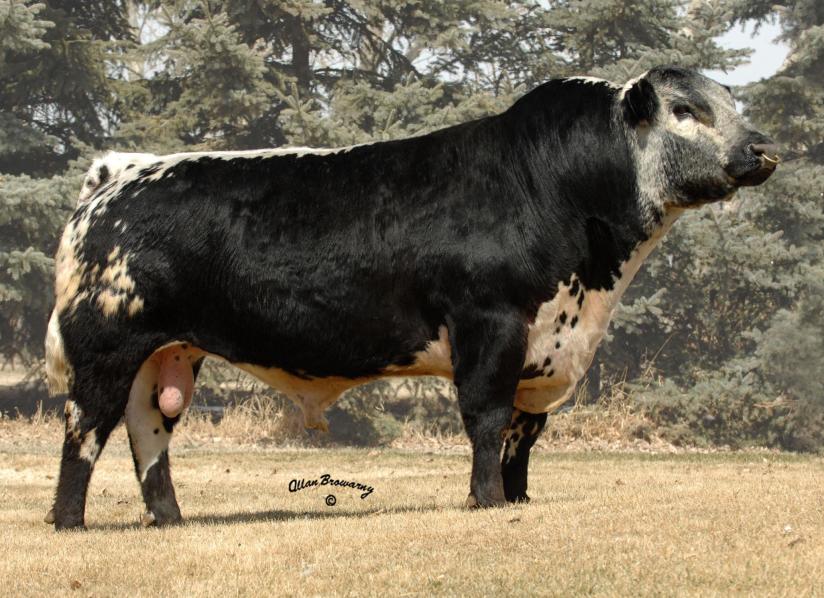
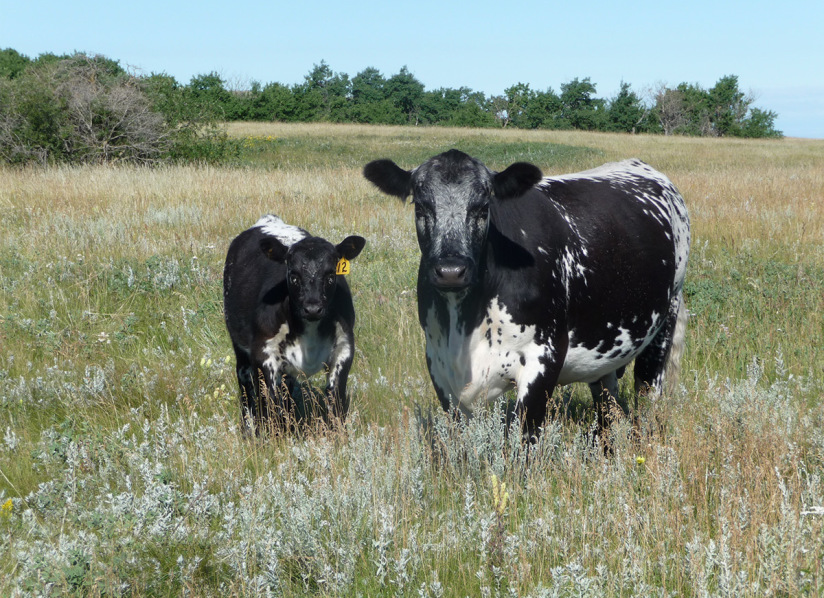
The Speckle Park breed is a Canadian creation. Speckle Park were created and developed in two western Canadian provinces – Saskatchewan and Alberta. Speckle Park as a breed consistently produce moderate sized well marbled carcasses with a minimal fat cover. Speckle Park do all of this in a harsh winter environment on very basic food stuffs. Speckle Park are now also at home in Australia, New Zealand, Ireland, England and the United States.
Often described as “the beef breed with the colour bonus” SP have a range of spectacular colour patterns. The “classic speckled” pattern is black sided with a white top line and underline, a black or grey head and spots on the rear quarters like the Appaloosa horse. The black sides may be broken into many smaller black spots of various sizes on a white ground. Some are white with black points on the nose, ears, skin around the eyes, and feet and legs. Teats are black. Speckle Park also produce some solid black progeny. All of the colour patterns have pigment in the right places for sun and snow. Speckle Park also grow extremely heavy coats in winter and then slick off quickly for the spring and summer.
Speckle Park are moderate sized animals. Mature cows typically weigh 545 kg (1200 lbs), and mature bulls weigh 910 kg (2000 lbs) or a bit more. Calves average 34 kg (75 lbs) at birth and wean between 250-260 kg (550 – 575 lbs). Finished carcasses on the rail typically have an average weight of 330 kg (725 lbs).
Speckle Park also bring to the cattleman many other highly desirable traits: polled, early fertility, calving ease, vigorous calves, milking ability, and manageability of cows and bulls.
Speckle Park were developed over a period of fifty years and are now a distinct pure breed with a closed herd book as stipulated by the Canadian Animal Pedigree Act. The breed’s genetic base is British and derives primarily from black Angus, a Teeswater Shorthorn and an unidentified white bull with coloured points.